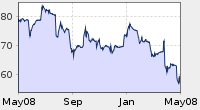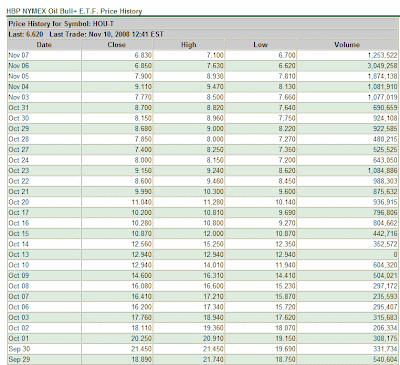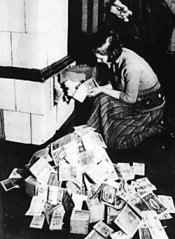
LAN WHEATLEY
Reuters
November 9, 2008 at 9:43 AM EST
BEIJING — China has approved a 4-trillion yuan ($586-billion) government spending package to boost domestic demand and help the world's fourth-largest economy ride out the global credit crisis, Xinhua news agency said on Sunday.
The State Council, or cabinet, also announced a shift to a "moderately easy" monetary policy, possibly foreshadowing further reductions in borrowing costs on top of three interest rate cuts made since mid-September.
The People's Bank of China had already relaxed its monetary stance to "prudent and flexible" from "tight" in the summer as inflation crested and economic growth started to slow.
"With the deepening of the global financial crisis over the past two months, the government must take flexible and prudent macro-economic policies to deal with the complex and changing situation," according to a statement relayed by Xinhua.
Officials have been flagging measures to pump up demand since gross domestic product growth slowed unexpectedly sharply to 9.0 per cent in the third quarter from 10.4 per cent in the first half.
Economic conditions took a further turn for the worse in October. Still, economists were impressed by the size of the stimulus package, which amounts to about 14 per cent of annual economic output spread over little more than two years.
"This is pretty major," said Arthur Kroeber, head of Dragonomics, a Beijing economic consultancy.
"It reflects the official view of how serious this problem is and shows that this is a government that can mobilize enormous resources to stimulate the economy when they put their minds to it," Mr. Kroeber said.
By comparison, to boost demand after the Asian financial crisis Beijing issued infrastructure bonds in 1998 worth just 1.2 per cent of GDP.
Xinhua did not say how the 10-point plan would be financed, but China can afford to spend freely. It ran a consolidated budget surplus in the first half of the year of more than $170-billion.
Year-on-year tax revenue growth has since dwindled to just 3 per cent on the back of a sharp drop in corporate profits, but domestic Treasury debt is just 16 per cent of gross domestic product, Mr. Kroeber said.
The announcement of the spending programe, decided at a cabinet meting on Wednesday, coincided with meetings in Sao Paulo of finance ministers and central bank chiefs to learn lessons from the financial turmoil and discuss how to support growth.
"As long as we adopt the correct policies and measures in a timely and decisive manner to seize opportunities and cope with challenges, we will definitely be able to maintain stable and fairly fast economic growth," the cabinet said.
As part of an "active" fiscal policy, Xinhua said investments would be targeted at roads, railways and airports across China as well as social welfare and other key areas.
Money would also be poured into affordable housing, rural infrastructure, the power grid, environmental protection and technical innovation, Xinhua said.
Mr. Kroeber said a lot would depend on what proportion of the package is funnelled towards boosting wages and spending to help wean the economy off unsustainably rapid investment, which has been the main driver of China's double-digit growth over the past five years.
"How much of it will be good old tried-and-true building bridges, and how much will be put into income and consumption support measures that are arguably more beneficial?" he asked
Underlining the need to boost capital spending "swiftly and forcefully", it said China would invest an additional 100 billion yuan in national infrastructure this quarter.
With another 20-billion yuan brought forward from next year's budget for post-disaster reconstruction, nationwide investment this quarter would reach 400-billion yuan, Xinhua said.
The cabinet also confirmed a long-awaited change in the way value added tax (VAT) is calculated. Companies will be able to deduct the cost of capital equipment when working out their VAT bills, saving them about 120-billion yuan a year, Xinhua said.
"The adjustment in the global economy is bringing new opportunities for us to speed up the upgrading of our economic structures and introduce advanced foreign technology and personnel," the cabinet said.
 With all three Detroit-based automakers in dire straits and seeking a Washington bailout, the moment finally has arrived for a radical reinvention of America's domestically owned auto industry. Which means letting the Detroit Three reorganize under bankruptcy protection, from which several smaller, more nimble and competitive firms would emerge, no longer prisoner to Detroit's hidebound, century-old decision-making traditions.
With all three Detroit-based automakers in dire straits and seeking a Washington bailout, the moment finally has arrived for a radical reinvention of America's domestically owned auto industry. Which means letting the Detroit Three reorganize under bankruptcy protection, from which several smaller, more nimble and competitive firms would emerge, no longer prisoner to Detroit's hidebound, century-old decision-making traditions.































